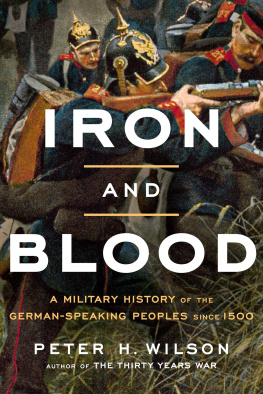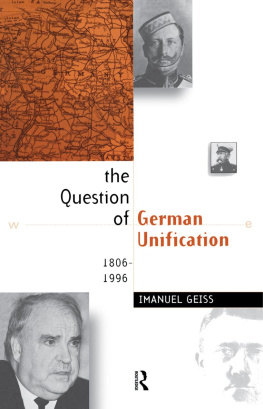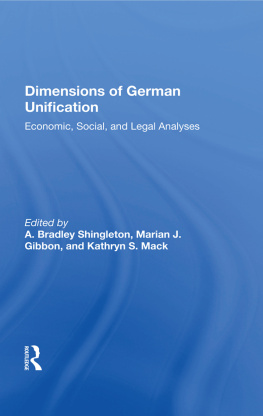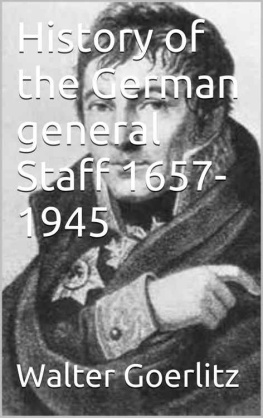The German Wars
A Concise History
18591945
Michael A. Palmer

To my father, Howard V. Palmer,
who quit high school to serve
in the Second World War and
died on 23 June 2008
Contents
Introduction
WARFARE BEGAN A GRADUAL TRANSITION from what strategist Bernard Brodie termed the age of muscle to the age of the machine during the Renaissance, centuries before the advent of the Industrial Revolution. At first, gunpowder weapons had a minimal tactical impact on the battlefield, although large but immobile cannon did prompt a revolution in siege craft. At sea, as on land, cannon did not immediately herald a new age of naval warfare. Not until the sixteenth century did the square-rigged, carvel-built man-of-war, armed with broadside cannon, become the state-of-the-art seagoing weapons system.
As Europe meandered into the Industrial Revolutionthe mechanization of production, a shift from cottage-based industries to large-scale factory manufacturing, specialization, concentration of capital and labor, and concomitant socioeconomic changesin the second half of the eighteenth century, its impact on warfare remained fairly limited. From the late seventeenth century into the middle of the nineteenth century, increased industrial output allowed the European states to field ever larger armies. The numbers of troops on battlefields rose from the tens of thousands to often over 100,000. But while the capability to produce sufficient materiel to maintain these larger armies in the field increased, the actual movement of supplies and reinforcements to the front, and the strategic movement of troops, changed little from the days of Alexander the Great and Julius Caesar. Men moved from point to point and from the rear to the front, by foot and by horse. Armies were often, as had always been the case, supplied locally, either through requisition or outright looting. Smooth-bored, muzzle-loading muskets remained the dominant infantry weapon. There were improvements in the production of locks (match, flint, and percussion) and fitted bayonets (plug, ring, and socket), along with marginal increases in rate of fire. The same was true of smooth-bored, muzzle-loading artillery. Improved carriages increased battlefield mobility while massed production and standardization allowed armies to field ever more cannon. But the rifling of muskets and artillery remained the exception and had minimal impact on battles. At sea, wooden ships of war remained wind driven.
The Industrial Revolution did not transform warfare until the second half of the nineteenth century. Rifling and breech loading altered the character of infantry weapons, artillery, and battlefield tactics. Initially, rifling slowed the reloading process; only after the American Civil War had ended did rate of fire begin an almost steady increase. The railroad allowed for the more rapid mobilization of troops, along with the movement of supplies, to the frontier, encouraging the development of reserve systems that led to a massive increase in the size of armies. To manage these ever-larger deployed forces and meet the new demands of the battlefield, officer corps became more professionalized, and the European states began to develop general staff systems. The growing European industrial infrastructure generated increasing wealthCiceros sinews of warto support large-scale industrial conflict.
How marked were these developments? Imagine a Prussian army of 50,000 men from 1756 being mysteriously transported through time to an 1806 battlefield, there to confront another comparably sized Prussian army of the latter date. Despite the advance of fifty years, the 1756 force would still give a good account of itself. If better led, it might conceivably triumph. But imagine a similar event carrying a French army of 100,000 men from 1870 onto a battlefield of 1920, there to combat a comparably sized French force equipped with quick-firing 75-mm field guns, long-range howitzers, poison gas, flamethrowers, machine guns, and tanks, and supported from above by ground-attack aircraft. The 1870 force would be slaughtered.
A similar contrast can be seen between the armies of Europe and those of the non-Western world. The growing inability of local African, Middle Eastern, and Asian forces to compete with those of Europe, even when the former possessed a large numerical advantage, became increasingly marked. While indigenous forces on occasion overwhelmed European armies, the Zulu victory over the British at the battle of Isandlwana (1879) being an example, such defeats were so notable because they were so rare. Increased rate of fire combined with other Industrial Revolution advancessteam power that opened river systems to navigation and medical advances that contained the threat of heretofore debilitating diseases such as malaria and yellow feverallowed European imperialists to advance from the coastal regions of Asia and Africa, where they had remained for centuries, deep into the interiors of these continents.
Within Europe the military impact of the Industrial Revolution arrived in force during the mid-nineteenth century, but under false colors. Most general staffs and commentators believed that the increasing industrialization of warfare would make conflicts more decisive. A few thought otherwise, citing examples from non-European wars, such as the American Civil War (18611865) and the Boer War (18991902). But the seeming decisiveness of the short wars of German unification (18661871), fought by the Prussian army against the Danes, Austrians, and French, suggested that first-class armies, once engaged, would quickly battle to a decision. Moreover, the direct and indirect economic expense of a conflict made the concept of a long war unthinkable to some critics. The costs of an extended clash would most certainly outweigh the likely gains. Economic competition was overtaking military rivalry. Surely, the European states, with their seemingly ever-expanding prosperity and popular governments, had entered a new and enlightened era.
But in 1914, the realities of industrial-era warfare shattered the self-confidence of the Europeans, dealing them a psychic blow from which they have never truly recovered. They soon discovered that conflict among modern industrial powers was more destructive and costly than pre-industrial warfare and far from decisive. The attritional nature of warfare reasserted itself, and the targets for that attrition were not only the opposing military force, but also the enemy state and supporting society. While neither of the two world wars lasted as long as the Seven Years War (17561763), the somewhat shorter chronological extent of the conflicts was more than offset by colossal casualty lists, widespread destruction, enormous economic costs, and often societal disintegration. The first of the two world wars (19141918) led directly to the collapse of the German, Austro-Hungarian, Russian, and Ottoman empires. The Second World War led to the redivision of Germany (united in 1871), the physical destruction of most of central and eastern Europe, and the deaths of not only millions of combatants, but also scores of millions of noncombatants, often as the result of campaigns of intentional and industrialized genocide.
Central to the history of this entire period is Germany. Between 1859 and 1945, there were few inter-European wars, and none of them general, that did not directly involve the Germans. Several peripheral conflicts took place in the Italian and Balkan peninsulas. The Second War of Italian Independence (1859) pitted France and Sardinia against the Austrian Empire. The Third War of Italian Independence (1866) pitted the newly unified national state of Italy against Austria and was fought as part of the latters struggle against Prussia. The Serbo-Turkish War (1876), Russo-Turkish War (18771878), and the First and Second Balkan Wars (19121913) completed the process, underway since the late seventeenth century, of rolling back the European frontiers of the the sick man of Europethe Ottoman Empire.









